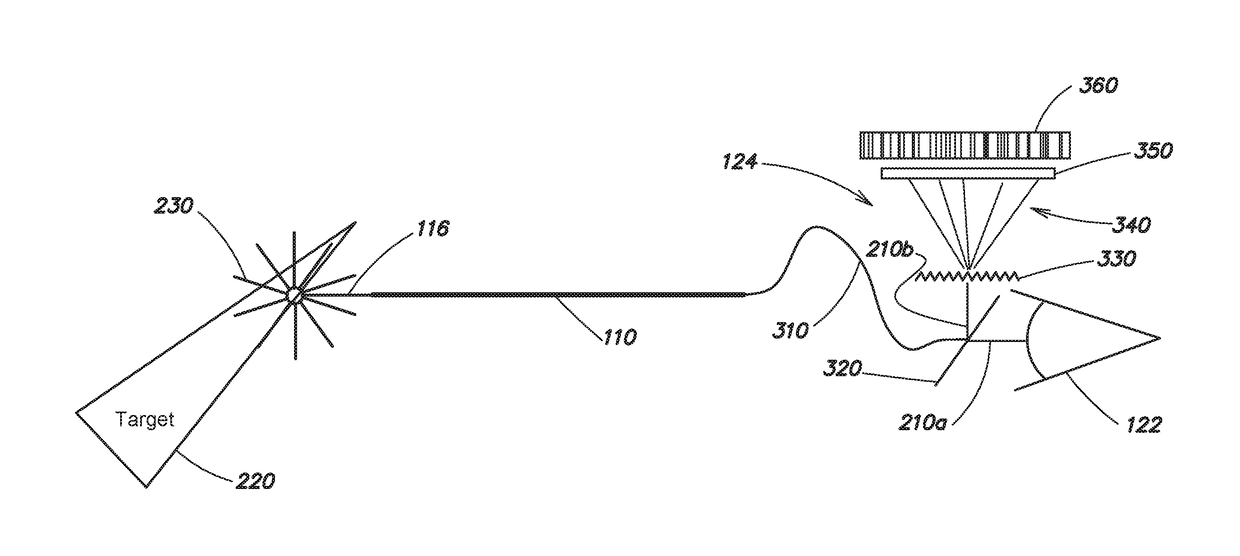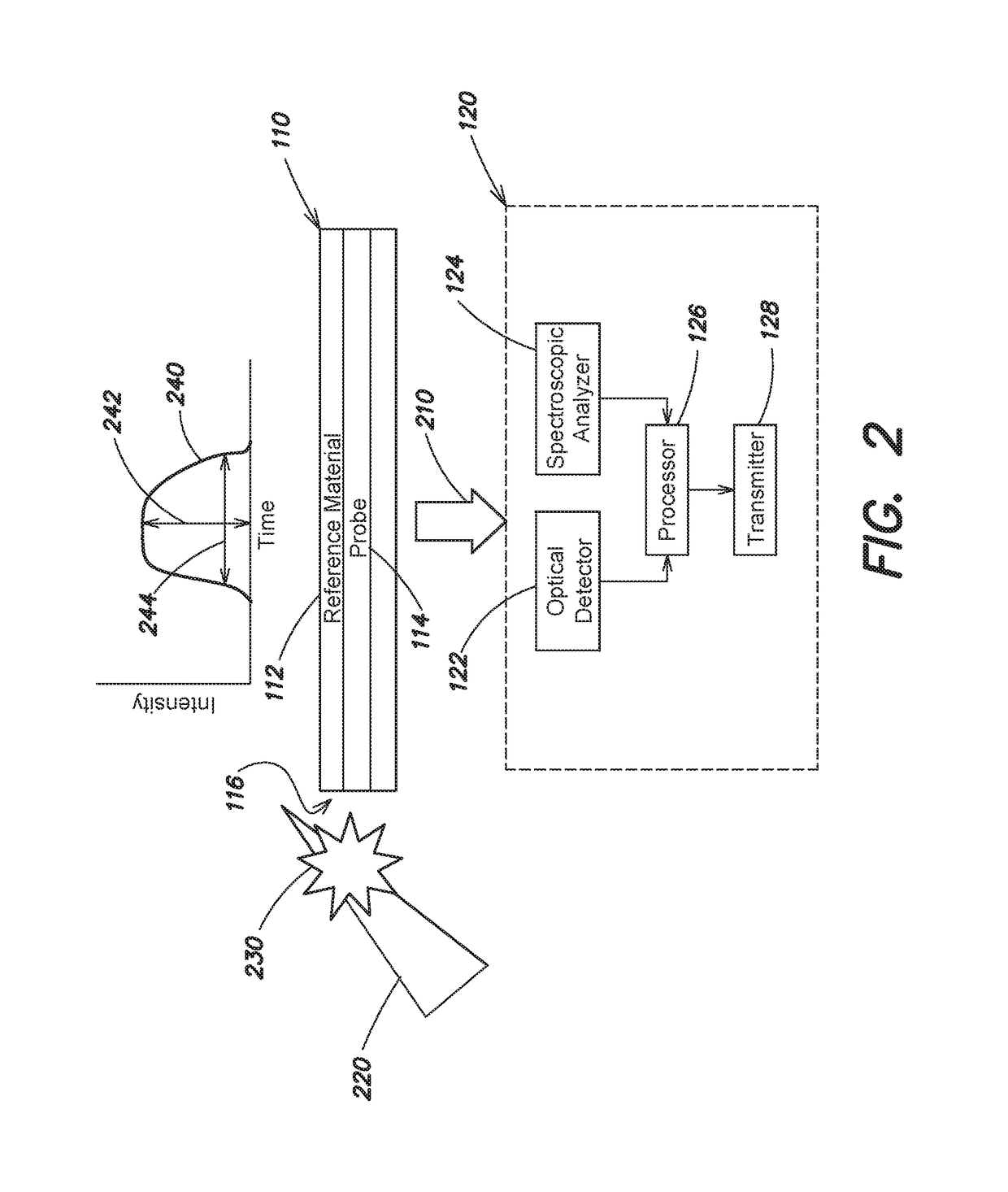Hyper-velocity penetrating probe for spectral characterization
a hyper-velocity, probe technology, applied in the direction of ammunition fuzes, target detectors, instruments, etc., can solve the problems of inefficient method that does not satisfactorily reduce or eliminate uncertainties, and high degree of uncertainty as to the circumstances of impact, etc., to achieve efficient or optimal use of resources and high degree of uncertainty
- Summary
- Abstract
- Description
- Claims
- Application Information
AI Technical Summary
Benefits of technology
Problems solved by technology
Method used
Image
Examples
Embodiment Construction
[0017]As discussed above, hyper-velocity impact sensors can be used to detect and report ultra-high velocity collisions between a projectile, such as a kinetic energy weapon or so-called kill vehicle, and a target. In particular, an optical fiber impact sensor can be used to detect and transmit certain information about the impact before the sensor is destroyed. However, guaranteed kill assessment of threats (i.e., determination with certainty that the threat was destroyed or neutralized) cannot be achieved using conventional approaches and technologies. Uncertainties in discrimination of threats versus other objects, and the data latencies between the time of the impact and the time at which an acceptably accurate determination can be made as to the identity of the impacted target and result of the impact (e.g., was the target destroyed) are prohibitive.
[0018]Aspects and embodiments are directed to a hyper-velocity impact sensor system that includes an optical fiber hyper-velocity ...
PUM
 Login to View More
Login to View More Abstract
Description
Claims
Application Information
 Login to View More
Login to View More - R&D
- Intellectual Property
- Life Sciences
- Materials
- Tech Scout
- Unparalleled Data Quality
- Higher Quality Content
- 60% Fewer Hallucinations
Browse by: Latest US Patents, China's latest patents, Technical Efficacy Thesaurus, Application Domain, Technology Topic, Popular Technical Reports.
© 2025 PatSnap. All rights reserved.Legal|Privacy policy|Modern Slavery Act Transparency Statement|Sitemap|About US| Contact US: help@patsnap.com



